John William Waterhouse (1849-1917) was an English painter who painted in the pre-raphaelite style. Born in Rome to two English painters, he was immersed in the art world from an early age. He enrolled at the Royal Academy of Art when he was 21.
He initially studied sculpture but went on to exclusively study painting. His paintings depicted women of British literature and Classical mythology such as Arthurian legends and Greek myths.
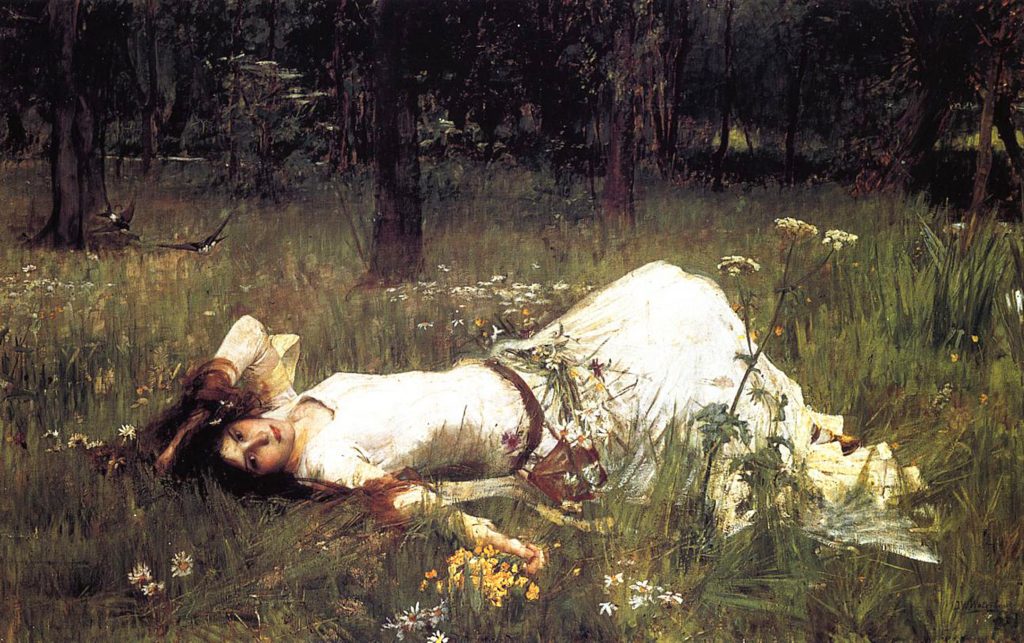
–
Waterhouse painted three versions of Ophelia from Shakespeare’s Hamlet. Each version is a depiction of her at different stages before her tragic death. In the first one (above), she is youthful and innocent. The second painting (1894) shows a slightly older Ophelia, sitting near the stream where she ends her life. The mature, grown woman in the last painting (1910) is Ophelia, who looks starkly different from the previous two paintings. We can see that she has fallen into madness by the look of her challenging gaze and the flushed cheeks. It is thought that she is just about to end her life in this piece as she seems to be balancing herself against the tree in preparation for stepping into the river.
He produced hundreds of watercolour and oil paintings. As he became more well known, his paintings grew larger in scale.
Although he was not a true member of the Pre-Raphaelite Brotherhood, his subjects and painting style reflected their tastes. He would continue to paint until his death in 1917 from cancer.
I am in love with Waterhouse’s paintings! They’re richly coloured and dramatically beautiful. All of the women in his paintings have an air of mystery and elegance in them. His paintings seem to have an Impressionistic style to them- I can see and feel the “grain” of his brushstrokes.
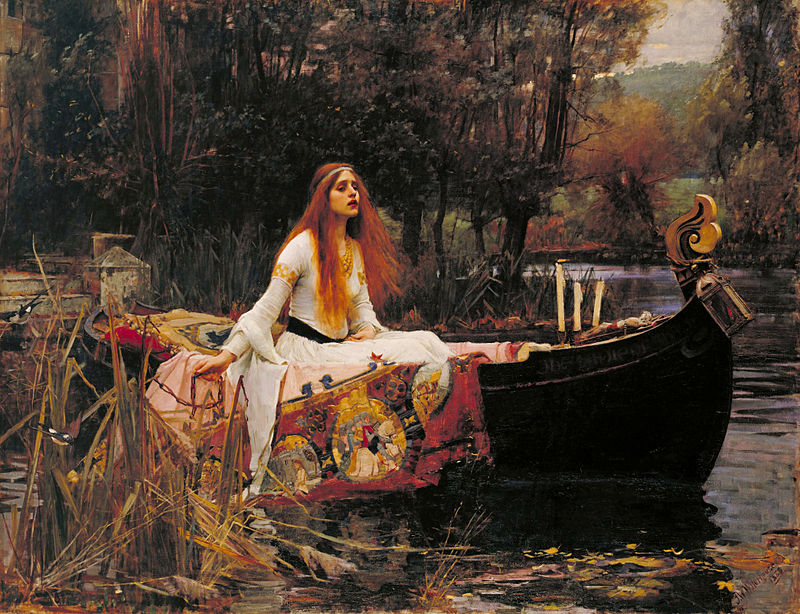
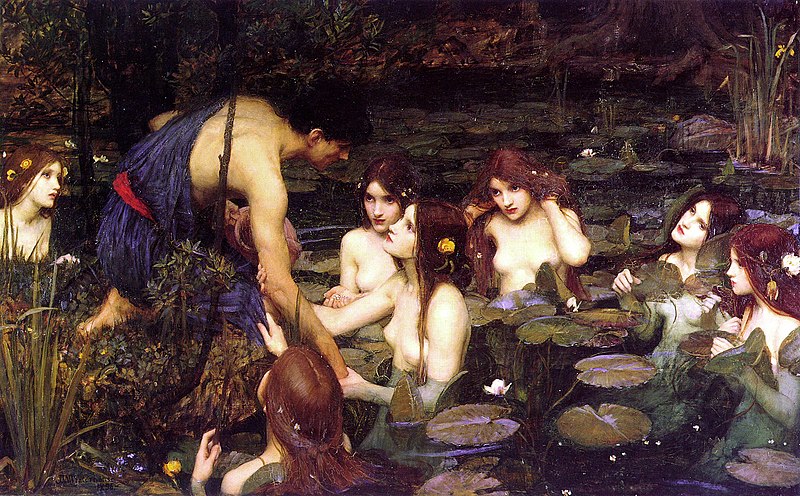
Sources:
www.johnwilliamwaterhouse.com
www.britannica.com/biography/John-William-Waterhouse
www.artnet.com/artists/john-william-waterhouse/
www.john-william-waterhouse.com/paintings/

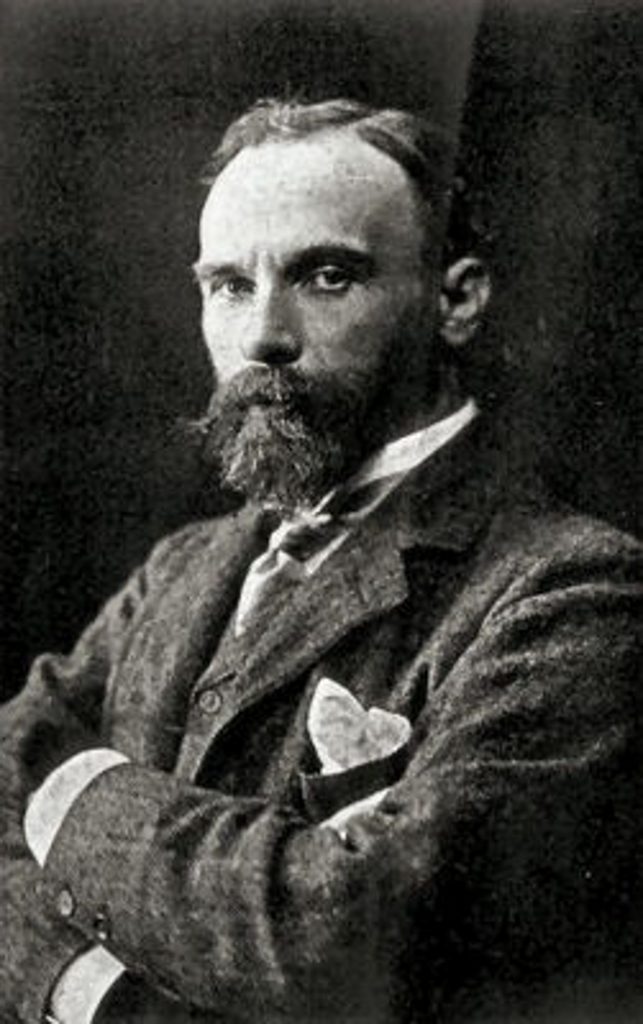

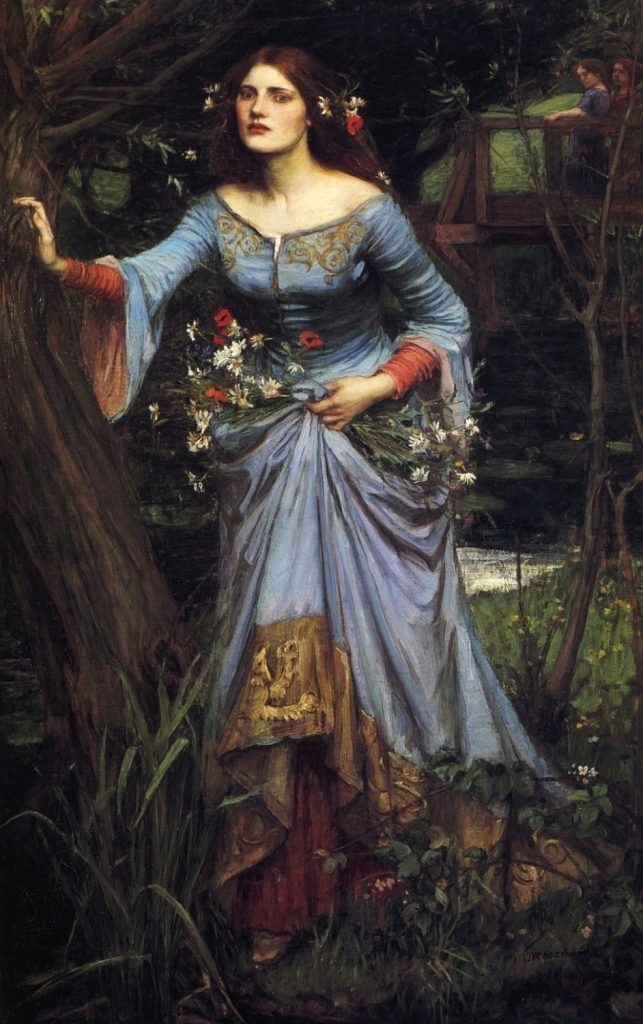
Michelle,
Very solid work on both Reynolds and Waterhouse. You have good research and some unique and interesting information. I especially appreciate Waterhouse’s paintings, especially the Lady of Shalott which is a painting I’ve stood in front of at the Tate Britain on numerous occasions. Another interesting point I wonder if you noticed but I’m pretty sure that the nymphs in his painting above are all the same model. Thoughts? Also see the article below from a few years ago about reaction to the Manchester Art Gallery removing the painting from their walls.
Jeff
https://www.theguardian.com/artanddesign/2018/jan/31/manchester-art-gallery-removes-waterhouse-naked-nymphs-painting-prompt-conversation